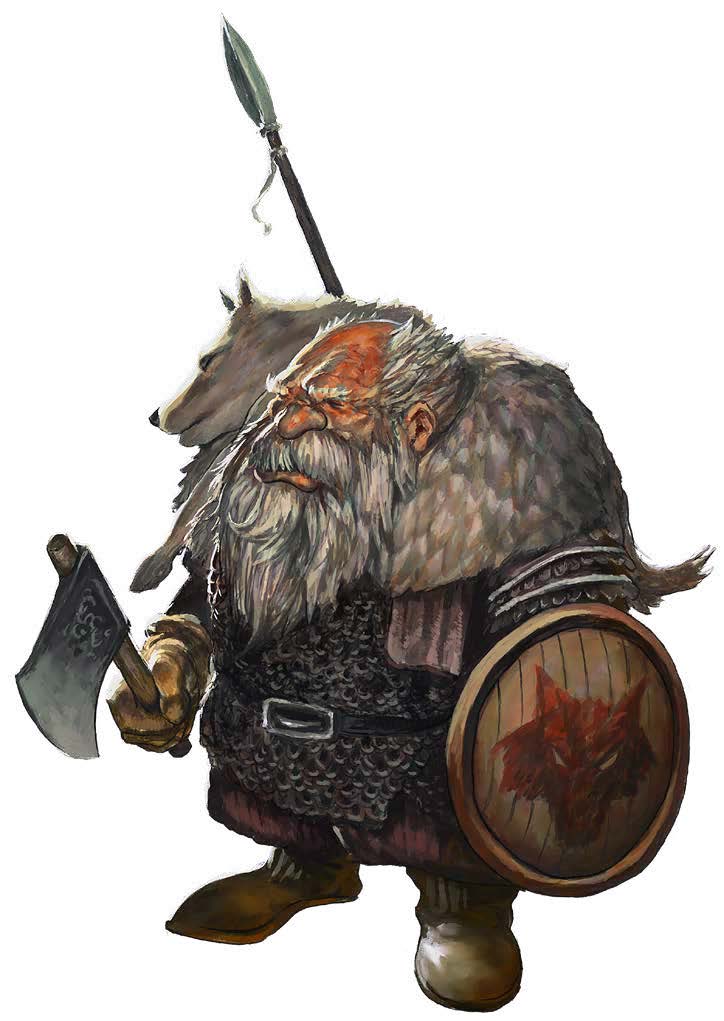 Dearest Mother and Father,
Dearest Mother and Father,
It has been too many months since my last letter. Fear not, I am safe and well though I made the unfortunate error of embroiling myself in a conflict between two families in Glasvale…
Familial Feuds
Some issues are beyond solving with words or at the holmganga. When this occurs in the Northlands, it often results in a feud. While feuds sometimes result from legitimate wrongs, just as often they begin as petty disagreements between two parties. The stubborn pride of the Northlanders rarely allows a feud to end peacefully, so it isn’t uncommon for entire families to be exterminated as the pattern of violence and reprisal perpetuates. Unless a feud threatens commerce, community leaders rarely intervene, hoping to maintain their neutrality. If a feud threatens to get truly out of hand, some huskarls and jarls will surreptitiously have both parties eliminated to keep the greater peace. Generally they try to mask this intervention as an accident or the work of bandits so as to avoid their own feuds with each party’s survivors.
In Glasvale, a riverside farming hamlet a day east of Amberhall, the feud between the Kibarnes and Jurrgenstine families has embroiled the entire community, requiring all members to declare their affiliation with one family or the other. The conflict is generations old, and the psychological scars carried by the entire settlement have made it impossible to find peace. Each time one of the parties is ready to settle the matter, old hatreds rise to the forefront once again. Visitors to the feuding community are sometimes drawn in inadvertently. The Jurrgenstines have become proficient at creating potent bombs made of grain alcohol and fertilizer, which are prone to killing or injuring otherwise innocent bystanders as collateral. A generation ago, the Kibarnes family targeted the Dusty Mill, a tavern owned by Jurrgenstine allies, and slaughtered everyone inside as a reprisal for an earlier attack. Most of the people present were merchants who were completely uninvolved in the feud. Sometimes other residents of the hamlet target strangers using the feud as a cover for their own criminal activities. Unwise visitors have been known to get involved trying to stop the feud, which usually gets them killed by whichever side is more angered by the interference.
Up the River
…which required that I make a hasty retreat before suffering some unfortunate fate! I escaped by joining a longship crew, and oh! What a difference there was between this travel and my earlier sea voyage!
Northlander longships are narrow with a shallow draft, enabling them to travel via river as well as on the open ocean. When necessary, the crew of a longship can portage the vessel overland between waterways. Ships manned by raiders are often decorated with their shields hanging over the sides. A typical longship is around fifty feet in length and can carry sixty people.
The design of the longship allows northern reavers to assault and pillage communities sitting inland from the coast. A great deal of mercantile activity is also facilitated by longship, allowing more remote settlements that are reachable by river to trade for goods they would otherwise be unable to get their hands on. Longship captains rarely take on passengers, but when they are missing a crewmember or two, they’ll often fill those benches with travelers in exchange for their manning of the oars and taking on other shipboard responsibilities.
Silver Scales
I had to work on the longship, rowing us upriver and helping to bail water after a heavy storm caused a crack to form in the hull! I was also allowed to fish for food, both with a net and on a line!
Southerners tend to stereotype Northlanders as tall, fair-haired berserkers and raiders. While it is true that many northerners take up the life of a raider, most of them tend to more mundane occupations. As such, fishing is a common livelihood in the region. In addition to being a food source for people, fish innards, skin, and bones are commonly rendered and fed to sled dogs or otherwise used as animal feed or fertilizer. Fish oil is a commonly used light and heat source in the north.
Seaborne fishers catch salmon, cod, herring, haddock, small eels, and some sharks. A few Northlanders have taken up whaling, but the dangers outweigh the potential profits for most unless they can afford to hire enough muscle. Seafood that isn’t purchased and eaten fresh is sold to the many seaside smokehouses where it is preserved for later consumption. Herring is a notable exception to this and is commonly pickled. Jars of pickled herring are easily found in most humanoid settlements in the north.
Pike, perch, catfish, and trout are caught by freshwater fishers. Large pike bones are widely sought by scrimshaw artists as they hold images beautifully. Most of the fish oil produced in the north comes from freshwater fish, particularly perch and catfish. Those who make their living by fishing inland may be safe from the dangers faced by their seafaring peers but instead contend with predators such as bears and axebeaks attracted to their catch.
As you can see, I am learning so many useful skills here. I want to stay in the north longer, so I can see and learn more. I have yet to see one of the bearfolk or a goblin city or even the primeval mountain-dwelling dragons I have heard tales of. At the same time though, my heart misses you and my brothers so very much, and sometimes I long to return home.
Until I see you again, I remain ever your daughter,
Inbar
